Wolves are said to mate for life, but it is a contentious claim, with some suggesting that while they are relatively loyal animals, it is also perfectly normal for an alpha male to mate with more than one female.
Finland's recent announcement that it is planning to continue its policy of a managed wolf cull, provoked outrage among conservationists who say we can live in harmony with the animals. But can we?
Eternal love?
Wolves are said to mate for life, but it is a contentious claim, with some suggesting that while they are relatively loyal animals, it is also perfectly normal for an alpha male to mate with more than one female.
"There once was a shepherd boy who was bored as he sat on the hillside watching the village sheep. To amuse himself he took a great breath and sang out, "Wolf! Wolf! The Wolf is chasing the sheep…"
Thus begins the Aesop's Fable that ends in tragedy for the sheep and a full stomach for the wolf. Penned as a warning not to tell lies, it may, over time, have stopped fibbers from twisting the truth, but it also - along with a catalogue of other stories, poems, songs and cartoons - almost doubtless played some role in condemning the grey wolf to decades, indeed centuries of loathing and persecution.
Hunted to extinction in central Europe more than a century ago, it is only in more recent years that they have begun to make their way back to countries such as Germany, France and Switzerland. But in many places, that return has been decidedly unwelcome.
Gabriel Schwaderer of the EuroNatur Stiftung says there is an unnecessary degree of hysteria surrounding the reappearance of the reviled grey wolf, a fact he attributes to the trappings of contemporary existence.
"We have completely lost knowledge of the behavior of these animals, and most people think they are terribly dangerous," he told DW, adding that despite the scaremongering about wolves attacking people, he does not regard them as a "real threat." Less so, in fact than their cousins, domestic canines.
Wolves life in groups which adhere to a very strict hierarchy
"Every year children in Germany are killed by dogs, but nobody says there should be a dog cull because of it."The counter argument is that there are a great many more dogs than wolves in the country, and that the situation might be very different if their numbers were on a par. Not that it is a scenario we are likely to see, for although Canis lupus is making a comeback, it's population growth is closely monitored.
Population collapse
Perhaps nowhere more than in Finland, which has just announced its intention to continue with a controlled killing of the country's 200 plus wolves. Unsurprisingly, the decision met with harsh criticism from conservation circles, who point out that the grey wolf is protected under European Union legislation.
But Sami Niemi, Advisor to Finland's Ministry of Agriculture and Forestry, says it has thus far proved to be the most effective way of helping the population to recover from the "collapse" it suffered in light of a 2006 ruling to tighten hunting regulations.
However illogical that might sound, he explains that prior to the passing of the new law, Finland boasted some 30 wolf packs. "By 2010, we only had ten packs left," Niemi said. That amounted to 120 animals, which for a country that lives in harmony with 1,500 bears and a 3,000 strong lynx population, is strikingly low.
The problem, he believes, can be related back to the same negative perception found elsewhere in Europe. Indeed in Finland, the wolf is seen as a pest, and a dangerous one at that. So when, in 2006, people were told they would no longer be able to hunt with the same abandon, they felt they had lost control over their own safety.
"The frustration among people in rural Finland caused an increase in illegal killing," the advisor said. "And that caused the collapse of the population."
Repeated efforts to change things
The government responded to the development with several measures, including slapping unlawful hunters with fines of up to 9,000 euros and criminalizing the practice. "If someone gets caught killing a large carnivore illegally, they can be put in prison for between four months and four years."
But when those threats and consequences failed to stabilize the population,which hovered around the 110 mark for some years, the ministry decided to trial a more radical approach.
"We had a two year experiment of issuing more licenses to hunt young individuals," Niemi continued. "We did not aim to kill alpha individuals because we want to secure the livelihood of the pack, while taking into consideration fear and concerns of rural people." Fear both for themselves and their livestock.
He says giving back some degree of sanctioned control has led to a drop in illegal killings, and therefore sees the cull as a solution to the "social conflict" that prevents the growth of the Nordic country's wolf population - which is what the ministry is ultimately striving for.
Living together
Yet even if the strategy is successful, there are serious question marks over the concept of allowing the slaughter of an animal that is protected and whosenumbers in many European countries are still so low.
Schwaderer of EuroNatur says societies and their farmers need to rethink the way they look at and deal with wolves as opposed to simply going out and shooting them.
"There is no scientific evidence that hunting wolves has an impact on damage reduction," he said, adding that it makes more sense to take a preventative approach to living with the predators. "They are opportunistic animals and if they can have a free lunch, they will take it."
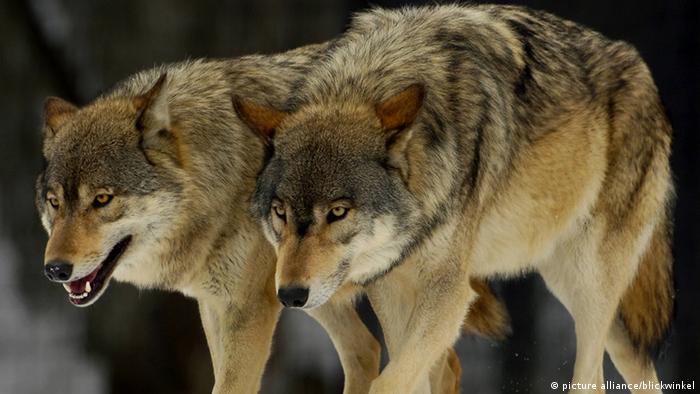
Wolves hunt in packs and together can kill large animals such as wild boar. If their diminished numbers mean they have to hunt alone, they are more likely to go for sheep
By that, he refers to the modern methods of sheep farming, in which owners leave their flocks unattended for several days at time, and as such, the door wide open for wolves to take their pick.
He advocates the use of electric fences and guard dogs, for which farmers could apply for state-supported funding, and a return to the days of old, in which it was commonplace for a shepherd to sit with animals. Rather more diligently than Aesop's protagonist.
source
Wolves have been depicted over time as ferocious animals that prey on people, and children in particular. Conservationists say there is no reason man can't live in peace alongside wolves.
Legend has it that wolves howl at the moon, but scientists refute this claim, saying they actually just lift their heads because it enables the sound to carry better. The animals are known to howl in order to assemble their pack, attract a mate, mark territory, scare off enemies, signal alarm, or communicate their position.
Wolves don't only live in packs, they also hunt as a team. While a single wolf can catch and kill smaller deer or mammals by itself, if they work together, they can prey upon larger animals such as moose or elks.
A wolf that has been driven from the pack - maybe as a result of sickness or weakness - or decides to leave by itself, is known as a lone wolf. These animals are said to howl less as a means of keeping themselves off the radar of other nearby packs.
Wolves are travelers, covering areas of between 30 to 50 km per day, and more if they don't find food. Their territories range in size, depending on the size of the pack and the density of prey within it, but average between 150 and 300 square km.
On average, wolves give birth to litters of between 6 and eight pups. They are born in dens which the pack's alpha female chooses during the 63-day gestation period. The babies are weaned after eight weeks, when they begin eating solids in the form of regurgitated food from the adults.
Wolves live in packs of between six and ten animals. The hierarchy is strict, with each pack headed by dominant alpha male. He, and his mate, the alpha female, are the only animals in the pack that breed, but all the adults help to take care of the pups.



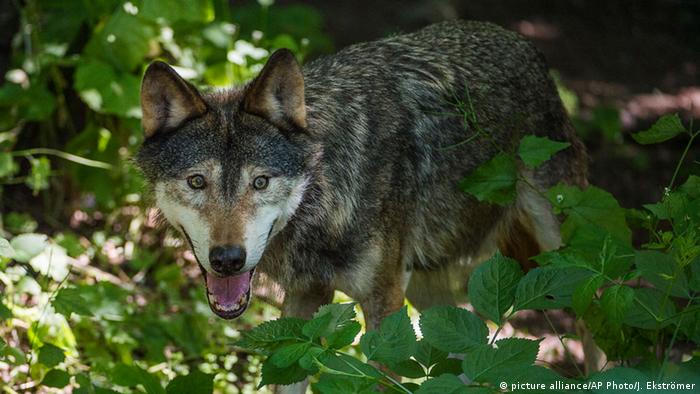
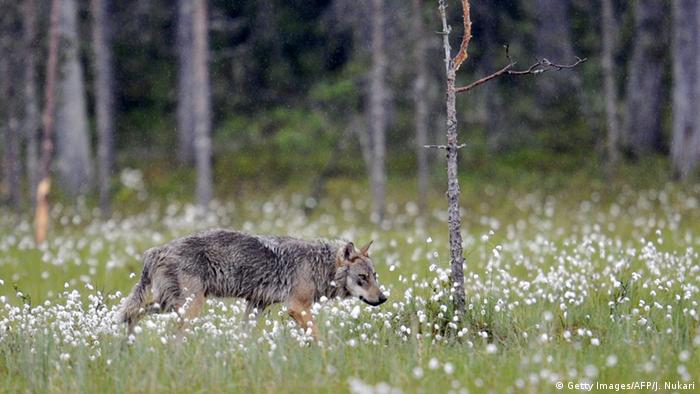

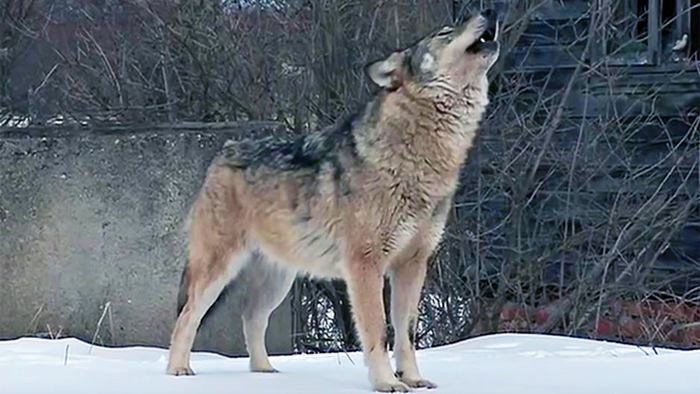
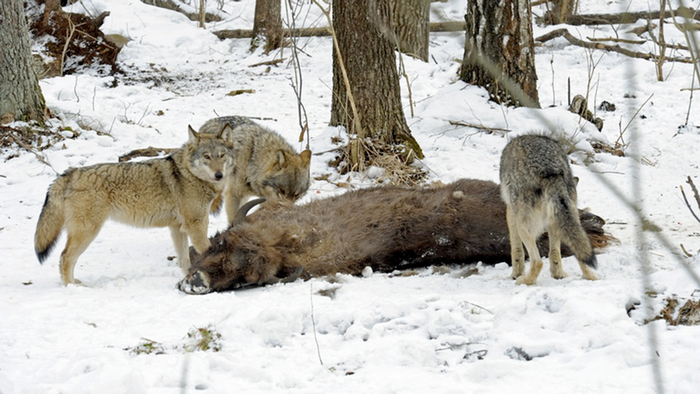
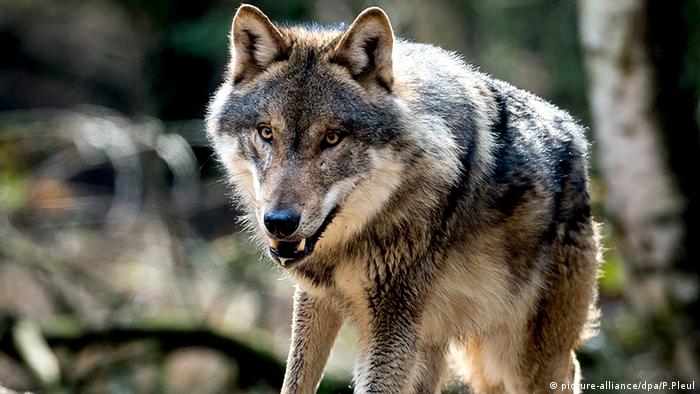



No comments:
Post a Comment